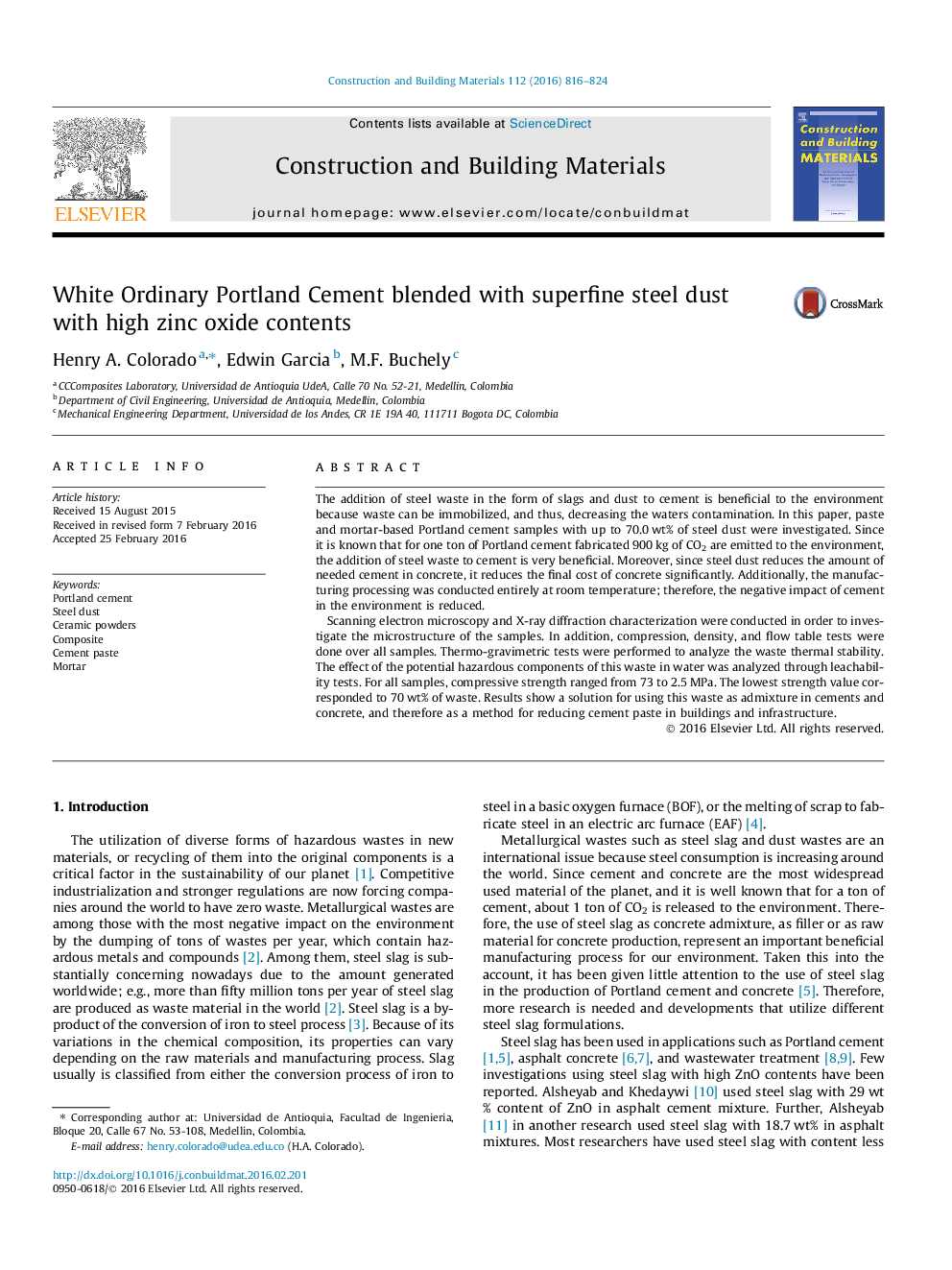| Article ID | Journal | Published Year | Pages | File Type |
|---|---|---|---|---|
| 6719374 | Construction and Building Materials | 2016 | 9 Pages |
Abstract
Scanning electron microscopy and X-ray diffraction characterization were conducted in order to investigate the microstructure of the samples. In addition, compression, density, and flow table tests were done over all samples. Thermo-gravimetric tests were performed to analyze the waste thermal stability. The effect of the potential hazardous components of this waste in water was analyzed through leachability tests. For all samples, compressive strength ranged from 73 to 2.5Â MPa. The lowest strength value corresponded to 70Â wt% of waste. Results show a solution for using this waste as admixture in cements and concrete, and therefore as a method for reducing cement paste in buildings and infrastructure.
Related Topics
Physical Sciences and Engineering
Engineering
Civil and Structural Engineering
Authors
Henry A. Colorado, Edwin Garcia, M.F. Buchely,
